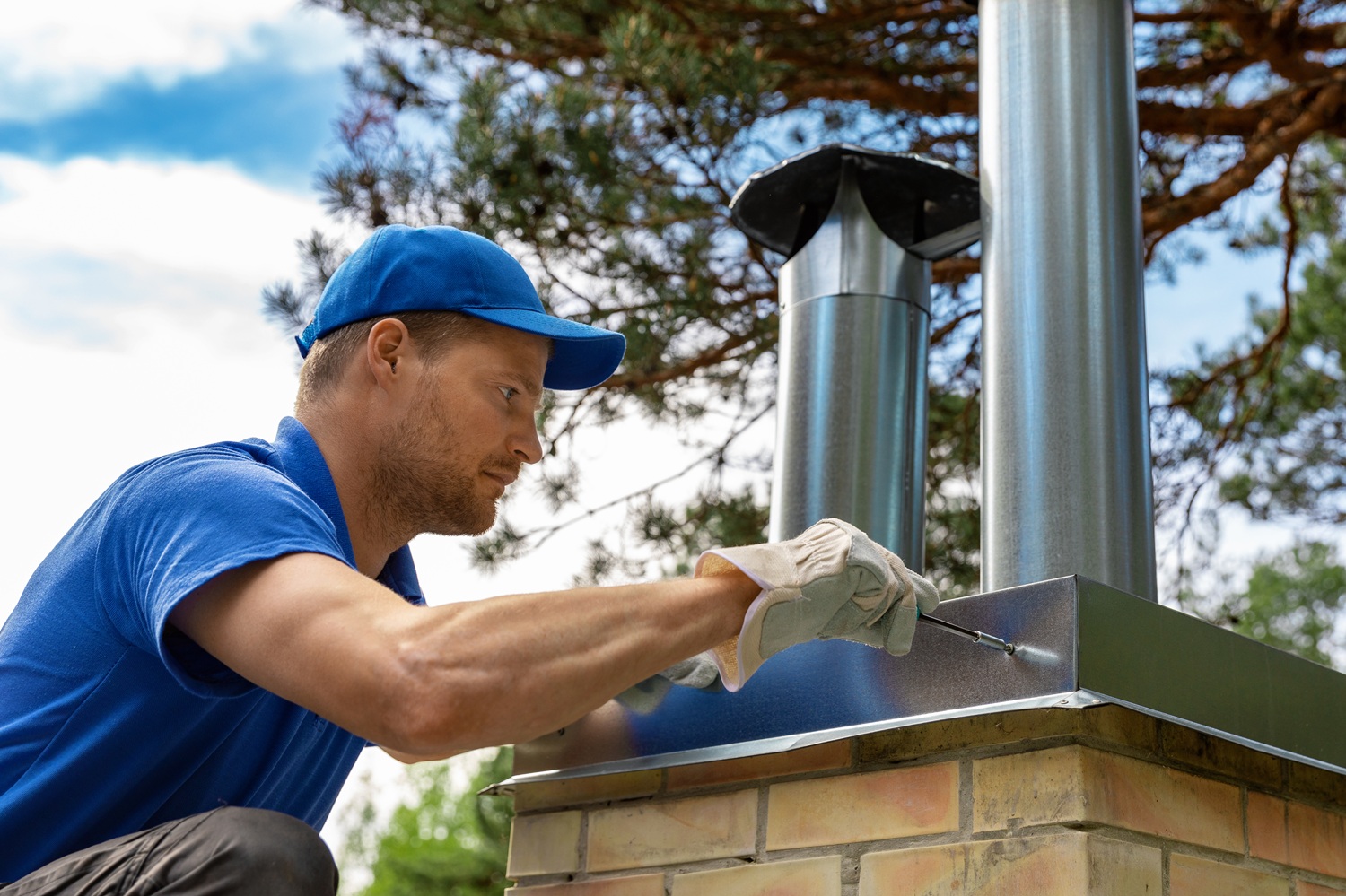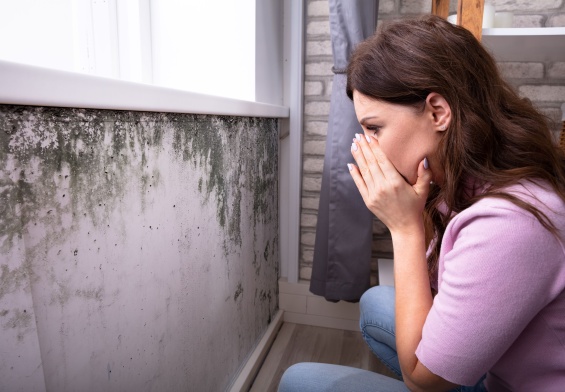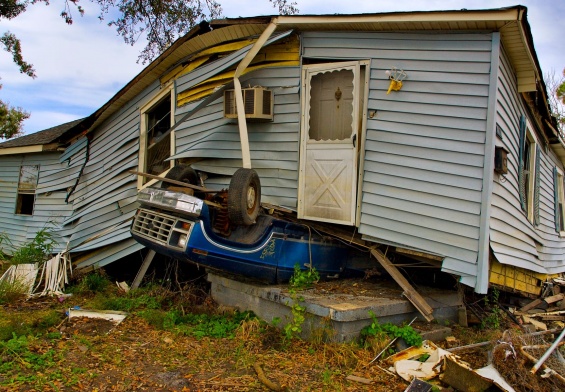No chimney is complete without a cap, which protects the building from serious problems. SoCal homeowners from Pasadena to Long Beach experience idiosyncratic issues like birds and rain getting inside the chimney.
That’s why you need to ask your favorite search engine or voice assistant “who’s the best chimney cap installer near me?” to keep smaller issues from expanding into expensive repairs.
The Hidden Dangers of an Unprotected Chimney
The lack of a cap exposes your chimney to myriad potential issues. Moisture can seep in, rusting liners and weakening the mortar. That fosters the conditions for mold to grow, breed and multiply throughout your home.
Mold issues can quickly lead to health problems and poor air circulation. Here’s how to improve your home’s indoor air quality if you’re already seeing signs of buildup.
Animals may also block the flue. If that’s the case, smoke and carbon monoxide will back up into your home, posing dangers to yourself and your family. Stray embers can also slip out onto the roof in severe cases.
These risks often result in costly repairs. They can cause structural damage or trigger insurance claims. That’s why many people search for a chimney cap installer near me when signs of damage appear.
This guide will walk you through finding a qualified local pro. We’ll cover what questions to ask and how to avoid common pitfalls.
Step 1: Understand Why Chimney Caps Matter in SoCal
Sunny weather is one of Southern California’s many quirks. But, it presents a unique set of challenges for the area’s chimneys. Wind-driven embers, seasonal rain, and nesting pests all pose risks to homes and multi-unit buildings.
Windy conditions are especially dangerous during fire season. Homeowners in wildfire-prone areas may also want to review smoke and fire mitigation strategies to further reduce risk. These winds can carry embers into unprotected chimneys. Without a cap, embers can settle in the flue or even spark rooftop fires.
Even light rain causes problems. Water can leak down the flue, damaging interior walls and rusting vital components. Homeowners experiencing that soon get smacked with unexpected repair bills or mold remediation.
Property managers face even bigger risks like tenant complaints, insurance issues, and legal liabilities. Fortunately, a chimney cap is one of the most cost-effective ways to prevent these outcomes.
Understanding the importance of a chimney cap is the first step. It helps you choose a reputable installer and ask the right questions.
Step 2: Start Your Search with the Right Keywords
When you’re ready to find a local installer, how you search matters. Typing “chimney cap installer near me” is a great start. Yet, adding your location makes results more relevant.
Use specific terms like “chimney cap replacement in Orange County” or “chimney cap installer in Burbank.” This helps search engines understand exactly what you need.
Focus on listings that appear in the map pack or local results. Look for businesses with reviews and a verified address. These tend to reflect real businesses that serve your community.
Be cautious of paid ads that don’t mention chimney-specific services. Make sure the headline or description clearly states their expertise.
For voice search, try saying “Find a certified chimney cap installer near me.” You can also ask “Who installs chimney caps in my area?” This helps voice assistants return more accurate, local results.
Property managers should consider saving a list of top-rated local pros. Create separate lists for each city like Santa Monica or Anaheim. This saves time when issues come up at different properties.
Step 3: Verify Credentials Before You Call
Always do some research and look into an installer’s credentials before calling. In California, contractors working on chimneys should carry a valid license and insurance. Ideally, they should also have chimney-specific certifications.
Look for certifications like CSIA (Chimney Safety Institute of America) or NFI (National Fireplace Institute). These show that the technician has proper training. They also prove the installer follows industry standards and understands chimney safety.
To verify a California license, use the Contractors State License Board (CSLB) website. Simply search by company name or license number. This confirms they’re active and in good standing.
This step only takes a minute and prevents further issues down the road.
Property managers should ask an extra question. Find out whether the installer has experience with multi-unit dwellings. Apartment complexes have different needs than single-family homes.
Step 4: Read Reviews and Look for Specifics
Online reviews are helpful when you know what to look for. Pay attention to the star ratings, sure, but also read between the lines and use your pattern recognition skills. See if customers mention chimney cap installation directly.
Look for details about punctuality, communication, and problem-solving. When reviewers mention “showed up on time” or “sent photos after the job,” it’s a good sign. Comments about fixing draft issues also show quality chimney cap work.
Get a little deeper, past the smoke and mirrors. Many people saying a tech was “fast but didn’t explain much” suggests a pattern. Similarly, complaints about rushing through jobs are red flags.
Positive signs include repeated praise for being thorough and respectful. Customers who mention easy communication also signal a professional installer.
Property managers should seek specific types of reviews. Look for mentions of multi-unit properties, long-term service, or willingness to work around tenants. These reviews reveal how reliable the installer will be for ongoing needs.
Step 5: Ask the Right Questions During Estimates
Once you’ve narrowed down potential chimney cap installers, it’s time to reach out. Listen to what they say, but also notice how they respond to your questions.
Start by asking what materials they use. Common options include stainless steel, copper, and galvanized steel. Then ask how they size and install the cap.
A good installer should mention inspecting the flue first. This ensures they choose the right cap for your specific chimney.
Other useful questions include: Do you offer a warranty? Will you take before-and-after photos? How do you handle access to multi-story buildings?
For more help with asking the right questions, especially if you’re managing larger projects, check out these 5 questions to ask before hiring a contractor.
Property managers should ask more questions. Find out about scheduling around tenant availability. Ask whether they offer service packages for many units.
Installers familiar with managed properties should coordinate directly with maintenance staff. This shows they understand the unique needs of multi-unit buildings.
Step 6: Request a Written, Detailed Estimate
After your initial conversation, ask each installer for a written estimate. Someone you can trust will always provide a detailed breakdown of the costs and services you’ll be paying them for instead of just a single number.
A clear estimate should list several key items like the chimney cap material, installation method, and any special equipment needed. It should also show the expected timeline.
If the work involves repairs or prep work, they should be itemized separately for maximum transparency.
All quotes should be in writing. A contractor refusing to provide a written estimate or hesitating to explain what’s included is a huge red flag. In Southern California, roofs and chimneys vary widely.
The details matter, especially in areas with building codes or HOA rules. Written estimates help property managers with budgeting and approval processes. They also provide a clear basis for comparing vendors.
Step 7: Look for Signs of Professionalism and Reliability
You can often judge an installer before they visit your property. How they present themselves is often a prelude to the kind of service they’ll provide.
Look for companies that use branded vehicles and provide digital invoices. They should also follow up with written confirmations. Quick responses and clear answers show they take the job seriously.
Pay attention to how they handle scheduling. Are they flexible with timing? Do they show up when promised? Are they willing to work around multi-unit building access requirements?
These signals matter even more for property managers. A professional chimney cap installer should offer streamlined communication. They should also be comfortable working with many properties or maintenance teams.
Step 8: Use This Chimney Cap Installer Checklist
Before making a final decision, run through this checklist. It’s designed to help homeowners and property managers feel confident about their choice.
- Licensed in California and active with the CSLB Check the contractor’s license status using the California State License Board’s lookup tool. This confirms they’re authorized to work on structural systems like chimneys.
- Carries proper insurance and certifications (CSIA, NFI) Ask for proof of liability insurance and certifications. These show the installer has proper training in chimney safety. They also provide coverage if something goes wrong.
- Experienced with chimney caps, not just sweeping or general repair Look for someone who specializes in cap installation. This ensures they understand proper sizing and secure mounting. They’ll also know how to prevent water and animal intrusion.
- Detailed reviews that mention chimney cap work specifically Read beyond the star rating and check that reviewers mention cap-related work. Look for patterns that highlight professionalism, quality, and problem-solving skills.
- Provides written, itemized estimates Request a quote that breaks down labor, materials, access equipment, and timeline. A detailed estimate helps you compare vendors and avoid unexpected charges.
- Willing to take before-and-after photos Photos provide peace of mind and documentation. This is especially helpful for property managers who may not be on-site during the service.
- Offers warranty and clear follow-up process Reliable installers should explain what’s covered if the cap loosens or wears prematurely. A short follow-up window for inspection or adjustments is also valuable.
- Professional communication and scheduling Installers should confirm appointments and respond promptly. They should also clearly explain next steps. This is especially important when coordinating access in multi-unit buildings.
- Familiar with residential and multi-unit buildings Ask about their experience with different property types. Some installers are better equipped for HOA work. Others focus on single-family homes.
Keep this list handy during your calls and consultations. It can help you spot red flags early and focus on companies that meet all requirements.
Maintaining Your Chimney Cap in SoCal
Once your chimney cap is installed, keep it healthy and issues at bay by maintaining it. Even in Southern California’s dry climate, seasonal changes and coastal air can cause problems.
Seasonal prep isn’t just for cold climates. Winterizing the exterior of your home can protect your chimney and roof before the rainy season hits.
Inspect the cap once a year for rust, corrosion, or signs of movement. Stainless steel caps hold up well. Yet, wind, weather and seismic activity can still loosen hardware or shift the cover out of place.
Watch for leaves or nesting debris that may collect around the mesh or screen. After Santa Ana winds or storms, do a visual check. Or, ask a chimney technician to inspect it safely.
Homes near the coast face extra challenges. Salt air really accelerates corrosion. Property managers with many buildings should add chimney cap inspections to their annual roof check schedule. For broader building care strategies, explore this preventative maintenance guide for housing communities.
Find the Right Chimney Cap Installer Near You
Finding the right chimney cap installer starts with knowing what to look for. Though the areas are different, the process is the same in Santa Monica, Agoura Hills, or deeper into the Inland Empire.
Search using specific local terms like “chimney cap installer near me.” Then check that each company you contact meets your checklist requirements. A few extra steps now can help you avoid bigger problems later.
Property managers should consider building a short list of trusted vendors. This saves time when coordinating work across many buildings. It also helps when responding to urgent issues.
Still unsure where to start? Try asking your voice assistant, “Find a certified chimney cap installer near me in SoCal.” Then use this guide to find your favorite.




